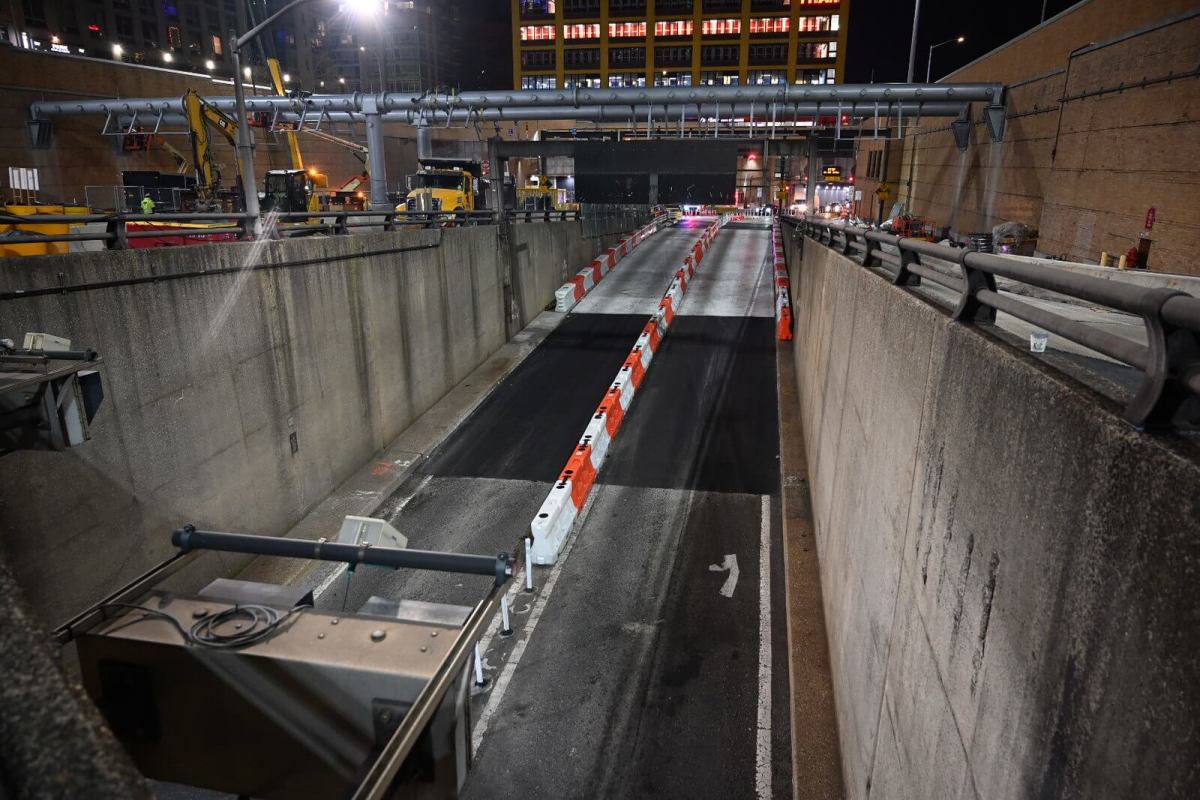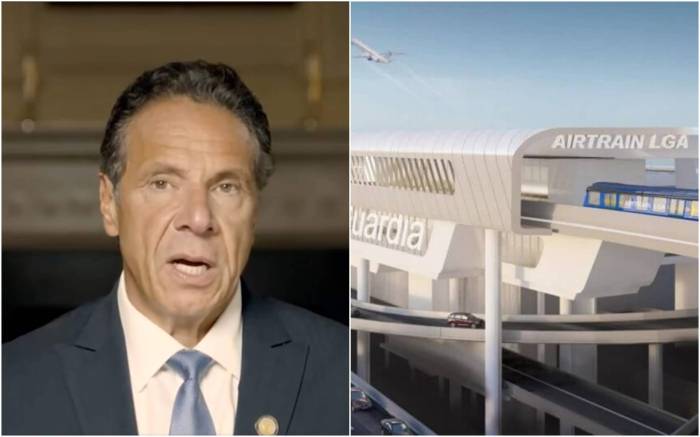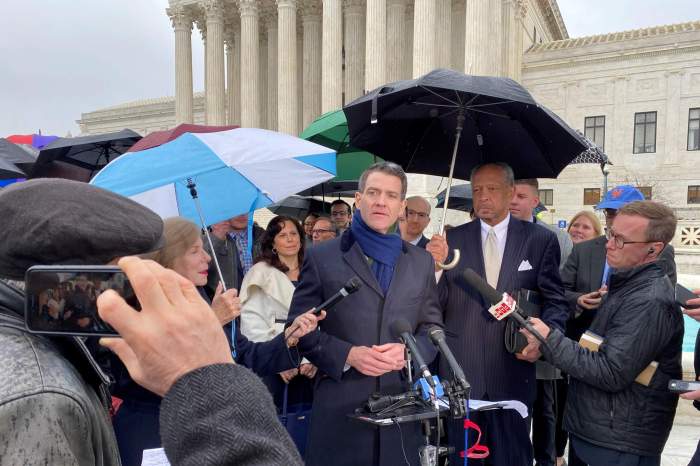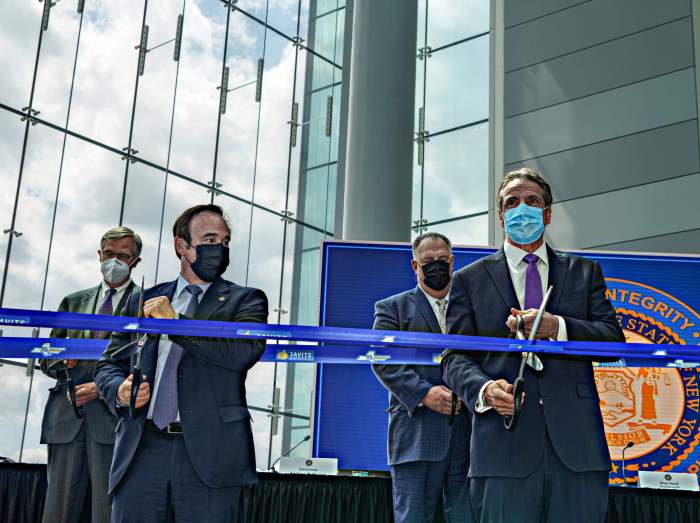Toll-y cow!
The Lincoln Tunnel will move to 100% automatic cashless tolling starting next month, completing the Port Authority’s phasing out of cash tolls on its crossings between New York and New Jersey.
The Port Authority’s last cash tollbooths will be deactivated on Sunday, Dec. 11, at which point all tolls will be levied either via E-Z Pass or by mailing a bill to the address of a crossing vehicle’s registrant. The automatic tolling technology is fitted atop overhead gantries that collect the necessary personal information and allow motorists to pay the toll without ever having to stop at a booth.
The Lincoln Tunnel will be the last of the Port Authority’s crossings to phase out cash tolls; the three Staten Island-New Jersey crossings have been all-gantry since 2019, while the Holland Tunnel made the switch in 2020. The most recent conversion came on the George Washington Bridge in July. The Port Authority has spent $500 million over several years to make the switch.
“Toll booths have served us well in the past when toll collection required someone to accept coins or tickets in exchange for passage, but at some point, nostalgia must make way for advances in technology that improve our lives – which for many of us in this region revolve around our daily commutes,” said Port Authority chair Kevin O’Toole in a statement. “The deactivation of the Port Authority’s last toll booths and upgrade to a cashless electronic system is not just a sentimental footnote in the timeline of our legacy bridges and tunnels, but a key milestone in our agency’s stewardship of the bistate region’s critical infrastructure.”
Port Authority honchos say that cashless tolling reduces collisions, eliminates dwell time, and diminishes the carbon emissions from paying a toll. Having tolls automatically levied from the gantry means motorists will not have to slow down and wait on line at a toll booth, which with engines running produces outsize carbon emissions without actually moving. The authority estimates the change at the Lincoln Tunnel will save motorists 1.3 million gallons of gas and reduce 11,500 metric tons of carbon emissions annually.
And since the art of merging at the toll plaza will no longer be necessary, the Port Authority says New Yorkers can expect crashes near its crossings to drop substantially. Since cashless tolling was implemented on the Bayonne and Goethals bridges and Outerbridge Crossing between Staten Island and New Jersey, collisions in the vicinity of those toll areas have been reduced by 70%, the authority notes.
The decommissioned tollbooths are set to eventually be demolished.
Car traffic has fully recovered from the pandemic trip slump: 3.4 million vehicles crossed the Lincoln Tunnel in July of this year, about the same as July 2019 levels, according to the Port Authority. Travel through New York area airports — also controlled by the Port Authority — has similarly recovered. That’s in contrast to transit ridership, which has lagged at around 2/3 of pre-pandemic totals.



































